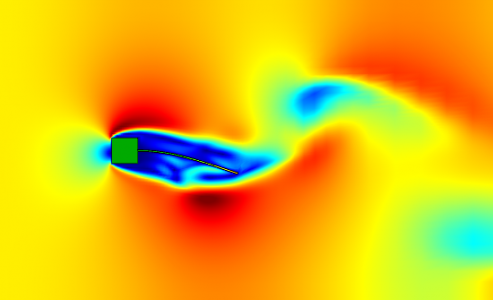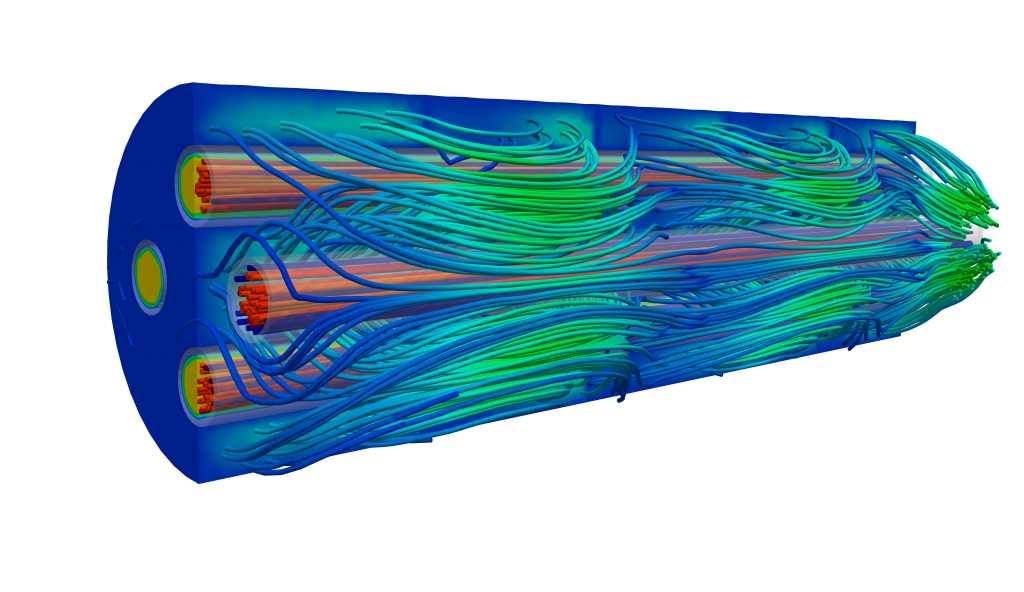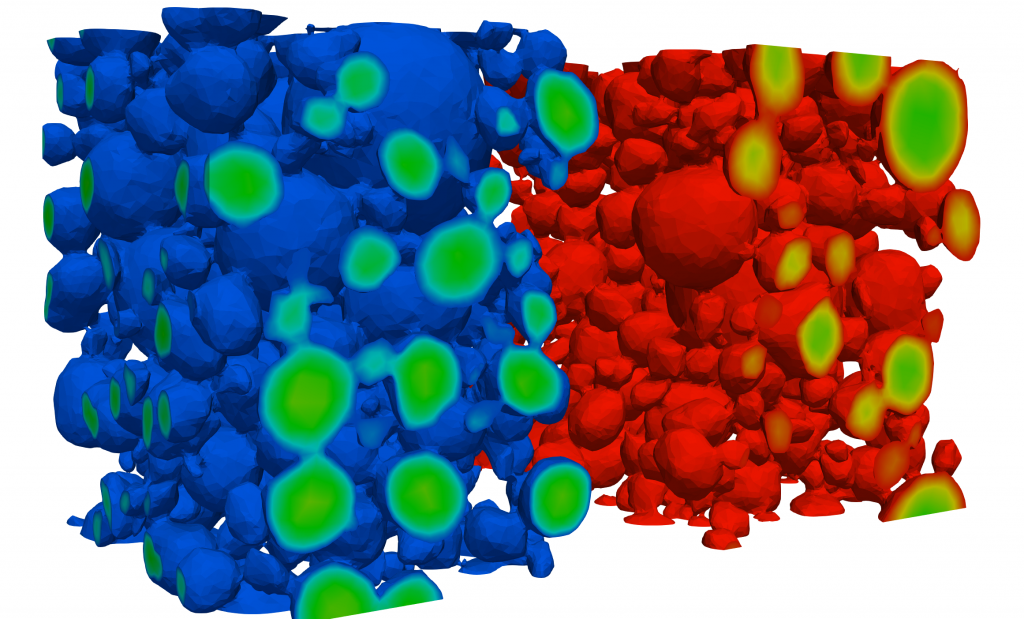Fluid-StruCturE InteraCtion
One of the most important and well-known multiphysics problems is fluid-structure interaction (FSI). Two fields are involved in this case: a fluid field and a solid field, connected by an interface. Forces of the flow field act on the structure, while structural deformations change the flow field. Applications range from civil, automotive, mechanical and aerospace engineering to biomedical applications, such as wind loads on buildings, oil pipelines, airbags, submarines, blades of wind turbines, parachutes, helicopter rotors, valves, and arterial blood flow.
Our unique experience and expertise particularly for this highly relevant application originates, among others, from the fact that the development of computational methods for FSI in Germany as well as worldwide is closely associated with the name of our founding shareholder Prof. Dr.-Ing. Wolfgang A. Wall.
Our solution for you:
- Advanced computational methods in both monolithic and partitioned form for simulating FSI
- Depending on what is most beneficial for your problem, ALE, fixed-grid or hybrid approaches are available.
- Advanced computational mortar methods for the often desired coupling of non-matching meshes at interface between fluid and structure.
- Advanced computational mortar methods for the combination of FSI and contact both as “wet” or “underwater” contact as well as “dry” contact.

Thermo-Structure Interaction
Thermo-Structure Interaction (TSI) is a volume-coupled two-field problem involving a solid and a temperature field. Thermally induced strains can generate stresses in the structure, and temperature changes can be caused by deformations. As for FSI, the coupling approaches are particularly important, and monolithic as well as partitioned approaches can be distinguished.
Our solution for you: Advanced computational methods in both monolithic and partitioned form for simulating TSI problems with large deformations and very large temperature variations
Thermo-Fluid-Structure Interaction
Thermo-fluid-structure interaction (TFSI) is a surface- and volume-coupled four-field problem consisting of a fluid and a structure field as well as two temperature fields, one in the fluid and one in the structure domain. A technical application where TFSI plays a major role is the so-called heat exchanger. The temperature fields are volume-coupled to their respective “carrier field”. Moreover, fluid and structure field as well as the two temperature fields are surface-coupled at the interface between fluid and structure field.
Our solution for you: Advanced computational methods in both monolithic and partitioned form for simulating TFSI problems, encompassing all features already mentioned for fluid-structure interaction (FSI) and thermo-structure interaction (TSI)

Combustion
Combustion is, on the one hand, one of the oldest technologies of human kind; but on the other hand, burning fossil fuels will still play a major role in the field of propulsion and power generation in the foreseeable future. Combustion is a two-field problem involving a fluid and a chemically reactive field. Premixed, non-premixed and partially premixed combustion may be distinguished. Very often, combustion occurs within a turbulent flow field.
Our solution for you: Advanced computational methods in the form of extended finite element methods (XFEMs) with multiscale approaches for simulating premixed combustion problems
Electrochemistry
Electrochemistry considers electrolytes and their properties as well as physical-chemical processes at the phase interface between an electrode and the surrounding electrolyte. A field of application of electrochemistry with which we have extensive experience is, for instance, electrodeposition, which is used for coating electrically conductive components with metallic layers. Exemplary goals in this context are corrosion protection and electroforming. Another field of application are electrochemical energy sources such as batteries and fuel cells. In the project FELIKS, we are currently developing simulation technologies for the simulation of batteries in collaboration with BMW AG. In such applications, electrochemical processes are typically coupled to another field such as a fluid field in the case of the electrodeposition or a solid field in the case of batteries. In some circumstances, a temperature field also needs to be considered.
Our solution for you: Advanced computational methods for simulating electrochemical fields, coupled to
- structural fields with complex geometry,
- fluid fields with full consideration of convective effects, and
- temperature fields

Poroelastic Flows
Applications of poroelastic flows range from geophysics, biomechanics to civil engineering, e. g., flow in oil reservoirs, bones as well as tissue and dam structures. A poroelastic flow consists of two fields: a structure field, which represents the so-called “skeleton”, and a fluid field, which may consist of one or more phases (see also multiphase flow) flowing through the interconnected pores.
Our solution for you: Advanced computational methods for simulating poroelastic flows with non-homogenous porosity fields
Biomedical Applications
Physics-based simulation models have revolutionized research and product development in many industries, as they can predict technical processes and the behavior of technical systems. In the future, these simulation models originating from engineering will also be used in clinical practice to better understand biological systems or specific symptoms and to derive optimal therapies for the individual patient. The application of numerical simulation techniques from engineering to medical problems has now been the subject of interdisciplinary scientific research for several years. The fields of application are very diverse: from the simulation of the cardiovascular system (or parts thereof) for a better understanding of various cardiovascular diseases to the determination of optimal therapies after a heart attack. Another example is the assessment of aneurysm rupture risk.
Our solution for you:
- Extensive specialized knowledge and know-how in this field as well as years of experience in the modeling and simulation of biomedical problems
- Consideration of hyperelastic and anisotropic materials or non-Newtonian viscosity models for fluids, which are particularly important when simulating biomedical systems
- Consideration of uncertainties and fuzzy information, which usually requires specific computational methods
